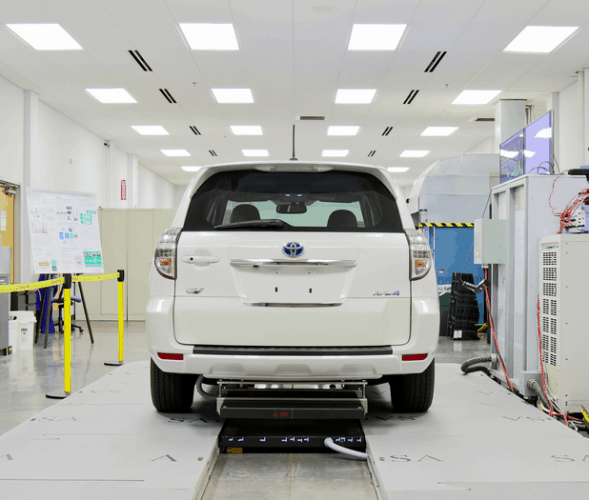Researchers at the US Department of Energy’s Oak Ridge National Laboratory (ORNL) have developed a 20-kilowatt wireless charging system for electric vehicles.
According to the scientists, the system has achieved 90 per cent efficiency and functions at three times the rate of the plug-in systems commonly used for electric vehicles today. For the demonstration, the single-converter system was integrated into an electric Toyota RAV4 equipped with an additional 10-kilowatt hour battery. Energy was transferred from a transmitting plate in the ground to a receiving plate in the vehicle’s front end. This was in turn transferred to the battery via a controller.

“We have made tremendous progress from the lab proof-of-concept experiments a few years ago,” said Madhu Chinthavali, ORNL Power Electronics Team lead.
“We have set a path forward that started with solid engineering, design, scale-up and integration into several Toyota vehicles. We now have a technology that is moving closer to being ready for the market.”
The next steps of the project will aim for the target of 50-kilowatt wireless charging, which would match the power levels of commercially available plug-in quick chargers. Wireless charging on a par with conventional plug-in charging could have major implications for the adoption of electric vehicles, and could also be a key enabler of autonomous vehicles. Higher power levels are also essential for charging larger vehicles such as trucks and buses.
“Wireless power transfer is a paradigm shift in electric vehicle charging that offers the consumer an autonomous, safe, efficient and convenient option to plug-in charging,” said David Smith, vehicle systems program manager. “The technology demonstrated today is a stepping stone toward electrified roadways where vehicles could charge on the go.”
• Ricardo is to commercialise Qualcomm's wireless electric vehicle charging (WEVC) technology for plug-in hybrids and electric vehicles, developing, making and supplying the systems while Qiualcomm supplies technical expertise and engineering support. Ricardo is expected to produce systems tailored for SUVs, taxis and autonomous vehicles, as well as higher-power, faster-charging technologies and buried inductive pads. "Wireless charging is a potentially very promising enabler for more widespread adoption of pure electric and plug-in hybrid vehicles, with consequent environmental benefits," said Dave Shemmans, CEO of Ricardo. "I am extremely pleased, therefore, that through the agreement announced today, Ricardo is now able to engineer solutions based on Qualcomm Halo technology, as an integral part of our own portfolio of low and zero emission vehicle and transportation technologies.” Steve Pazol, vice president and general manager, wireless charging at Qualcomm added: "This collaboration further strengthens the Qualcomm Halo automotive supply chain, providing options for WEVC both to the traditional automakers and the burgeoning EV entrants."




Report highlights significant impact of manufacturing on UK economy
Note to Evil Villain/Dave 2020. Thatcher was PM for _11_ years, from 1979 to 1990 so no one under the age of 34 was even born when she left office....